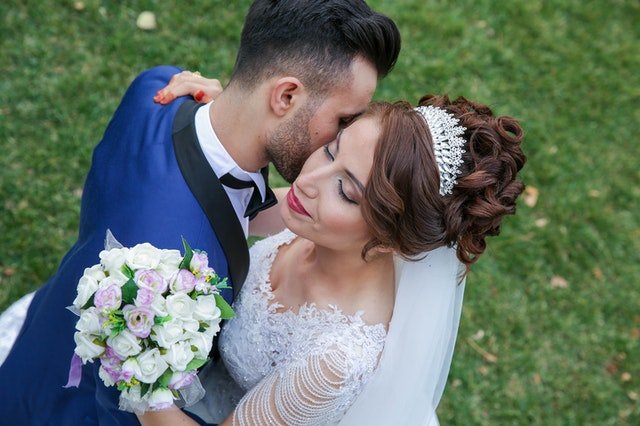

PETRA YVONNE ENGLISH
Family & Relationships
FAMILY
- A FAMILY is a group of people who are related to one another.
- One common type of family unit is a mother, a father, and a child.
People have close or distant relatives:
- grandparents = a grandfather, a grandmother,
- in-laws = a mother-in-law & father-in-law,
- a sister-in-law, a brother-in-law,
- uncles & aunts,
- cousins,
- nieces & nephews,
- godparents = a godfather & a godmother, a godchild,
- a stepmother & a stepfather, a stepsister & a stepbrother,
- a half-brother & a half-sister
FAMILY STRUCTURES
THE NUCLEAR FAMILY/ THE IMMEDIATE FAMILY
- The nuclear family is a very close family.
- Here we find mothers, fathers, siblings (brothers & sisters).
- They live together in one home and share specific goals and values.
FOSTER PARENTS/ A FOSTER FAMILY
- The foster family is a family that adopts a child temporarily.
- Foster parents usually adopt orphans or abandoned children who grow up in orphanages and foster homes.
A SINGLE-PARENT FAMILY
- A single-parent family consists of a single person and a dependent child.
THE EXTENDED FAMILY
- The extended family is a nuclear family together with grandparents.
A BROKEN FAMILY or A BROKEN HOME
- A family that includes broken relationships is sometimes called a broken family or a broken home.
Many people get divorced, and later remarry. Therefore many children live with step-parents and have half-brothers and half-sisters or stepbrothers and stepsisters.
QUESTION TIME
Part I
- How would you define the word FAMILY?
- What does family mean to you?
- Name four FAMILIAL STRUCTURES.
- What do we call a family that adopts a child temporarily?
- What is the difference between a nuclear and an extended family?
- Define a single-parent family.
- What do we call children who grow up in orphanages or foster homes?
BONUS QUESTION: Define the term FAMILY and FAMILY STRUCTURES.
FUNCTIONS OF THE FAMILY
- To provide children with food and education.
- To develop their emotions, talents, and knowledge.
- To provide social stability and protection.
- To bring them up / raise them.
- To teach them real moral values and how to behave, e.g.:
- how to greet people, to be friendly and polite, to care about others
- to differentiate between right and wrong
- to communicate, to keep secrets
- to solve problems in life, to become independent
- to work honestly
- A good family relationship means that parents and children get on well. They don’t argue much and can discuss problems.
- Parents are tolerant, an children respect them. A good and strong relationship is very important for everyone.
- A true/real family has a lot in common.
Family members often:
- share the same values
- support and help each other
- spend a lot of time together
- laugh togethers
- peak about everything
- keep secrets
- accept each other
- respect each other
- share happiness and sadness, as well
- are people who are always there for you
HOUSEHOLD CHORES
All family members have specific social roles with various tasks and responsibilities. Everyone in our family has their daily or weekly tasks or domestic chores.
- make the beds
- do the ironing
- make breakfast, lunch, dinner
- do the washing–up
- do the washing
- water houseplants
- do the shopping
- do the hoovering/vacuuming
- empty the rubbish bin
- mop the floor
- to sweep the floor with a broom
- dry the dishes
- set the table
- clean the windows
- tidy up my room
- dust the furniture
- fold laundry after washing
QUESTION TIME
part II
- What are the main functions of a family?
- What does ‚a good family relationship‘ mean?
- What makes a happy, functional family?
- Introduce your nuclear family and describe your familial relationships.
- Explain the proverb „ In time of test, family is best.“
- Which household chores/domestic chores can you name?
- Have a think about how we can avoid household chores and save time.
BONUS QUESTION: Name the functions of a family, describe a functional family, and name at least eight domestic chores.
GENERATION GAP
- Older and younger people often don’t understand each other.
- Parents and children differ in opinions and everyday life.
The most common conflicts between generations are:
- ways of dressing
- hairstyle
- behaviour
- smoking and drinking alcohol
- going out too often
- coming home late
- school results
- housework
- spending a lot of money
- different opinions
CAUSES OF DIVORCE
Unfortunately, there are many divorced couples in our society.
The most common causes of divorce are:
- addiction to alcohol, drugs, and gambling
- lack of money
- lack of trust
- multiple generations under one roof
- immaturity of parents
- different opinions on bringing up children
- intolerance, not knowing each other
- unemployment
IMPORTANT FAMILY CELEBRATIONS AND ANNIVERSARIES
Families get together for various occasions and anniversaries such as:
- birthday parties
- name day parties
- anniversaries
- passing an exam
- graduation
- retirement parties
- holidays (Christmas, or Easter, for example)
- religious celebrations (All Saints‘ Day, weddings, christening/baptisms, confirmation, first communion, funerals, etc.
BIRTH
Before a baby is born, its mother is pregnant/expecting a baby. She then gives birth usually in hospital. Parents give a name to the child and Christian parents may baptise their baby in a church – a christening.
WEDDING
At a wedding, the two people who are getting married are the bride and the groom.
The bride has her maid of honor and bridesmaids, and the groom has his best man and groomsmen.
A few days before the wedding ceremony, the husband-to-be hosts a party for his male friends. It is called a stag party/a stag night. The wife-to-be hosts a party for her friends, called a hen party/night.
A wedding ceremony is a formal act that can be religious or in a church. This is a church wedding /white wedding with a priest. It can also be a civil wedding – in the town hall at a registry office with the mayor.
The engaged couple exchanges their wedding rings and promises to live together through good and bad times.
After the wedding, friends and relatives are invited to a wedding reception with a layered wedding cake. The newlyweds then go on a honeymoon.
DEATH
Death is the end of life.
When someone dies, the body may be cremated or buried in a cemetery/graveyard.
There are different religious or social ceremonies for death in different cultures.
At the funeral, the body is put into a coffin. The grave is marked with a gravestone.
The widow or the widower, together with close relatives, mourn for their beloved.
MARITAL STATUS
Marital status: single, engaged, married, divorced, widowed
QUESTION TIME
part III
- What is a GENERATION GAP?
- Name the most typical conflicts between generations.
- What are the main reasons for divorce?
- When do you as a family meet up?
- What happens after two people decide to get married?
- What is the difference between a CHURCH WEDDING and a CIVIL WEDDING?
- Name five MARITAL STATUSES.
BONUS QUESTION: Think about some more conflicts between the young and the elderly. Suggest how these conflicts may be solved.
FAMILY IN THE PAST
- In the past, mothers often stayed at home.
- Parents had many children and enough time.
- The father earned money to support the family = he was the breadwinner.
FAMILY NOW
- Nowadays, mothers may work too.
- Women are emancipated.
- Parents often have an only child.
FAMILY LIFE IN ENGLISH SPEAKING COUNTRIES
- People in English-speaking countries often only have one or two children.
- Mothers may take care of their children or employ an au-pair, usually from abroad who helps in the household, plays with the children, or takes them to or from school. There are many au-pairs in these countries because they want to earn some money and improve their language skills.
- Parents lead their kids to independence, and when they get into university, the children often leave home and begin their own life.
FAMILY IN SLOVAKIA
- A typical Slovak family has two or three children, but to have four or five isn’t unusual.
- Mothers usually stay on maternity leave until their children turn 3. The children are often very dependent on their parents.
- When young people go to universities, parents support them financially.
- Young Slovak couples usually prefer living near their parents. It is common for
three generations to live together in one house or the same town. They often have
a strong relationship.
QUESTION TIME
part IV
- Compare a FAMILY IN THE PAST with a MODERN FAMILY.
- What is the role of breadwinner?
- What is an au-pair?
- Talk about the differences between typical Slovak and English-speaking families.
EXTRA QUESTIONS
- Do you keep any family holidays? Describe one family celebration.
- Choose a member of your family and describe him/her. (A Role Model)
BONUS TASK: Give a 5-minute speech on the topic ‚A FAMILY‘.
Vocabulary
Family members/relatives
súrodenci
rodičia / starí rodičia / prastarí rodičia
svokrovci
švagriná
krstní rodičia
krstný otec/ krstná mama
krstňa
nevlastný brat / sestra
macocha (nevlastná mama) / otčim (nevlastný otec)
synovec
neter
teta / strýko
bratranec, sesternica (sesternica z 1./ 2. kolena)

Family status/arrangements
nastávajúci manžel
nastávajúca manželka
slobodný
zasnúbený
ženatý/vydatá
rozvedený
vdovec
vdova
jedináčik
prostredné dieťa
najstaršie dieťa
sirota
adoptované dieťa
dvojčatá
milujúca rodina
široká / vzdialená rodina
vychovávať
rodina s jedným rodičom

Family celebrations and gathering
narodeniny
meniny
prvé sväté prijímanie…
birmovka
promócie
povýšenie v práci
svadba
pohreb

Wedding
snúbenec
snúbenica
nevesta
ženích
družba
svadobný obrad
svadobné šaty
závoj
svadobná hostina
svadba v kostole
svadba na úrade
radnica
primátor / starosta
mladomanželia
mať / ísť na medové týždne
požiadať o ruku
manželka
zásnubný prsteň
pánska jazda / rozlúčka so slobodou
dámska jazda / rozlúčka so slobodou
kolaudačná párty

Birth
nastávajúca mamička
byť tehotná
dojčenské oddelenie
plienka
postielka
materská dovolenka
výživné / alimenty

Funeral
pochovať
truhla
náhrobný kameň
hrob
veniec
posledná vôľa
Má smútok.

Friends and acquaintances
spoločný priateľ
živiteľ rodiny
hádať sa s niekým
vychádzať s niekým
obdivovať niekoho
láska na prvý pohľad
starať sa o niekoho / niečo
skamarátiť sa
najlepší kamarát
kamoš
spriaznená duša, dôverný priateľ

Duties and responsibilities
umývať podlahu
zametať s metlou
utierať prach
vysypať smeti
umývať riad
žehliť
postielať
polievať kvety
venčiť psa
kŕmiť dom.miláčikov
opravovať pokazené veci
variť
sadiť kvety

Share this with your friends👉
© 2025 Petra Yvonne English – English online







